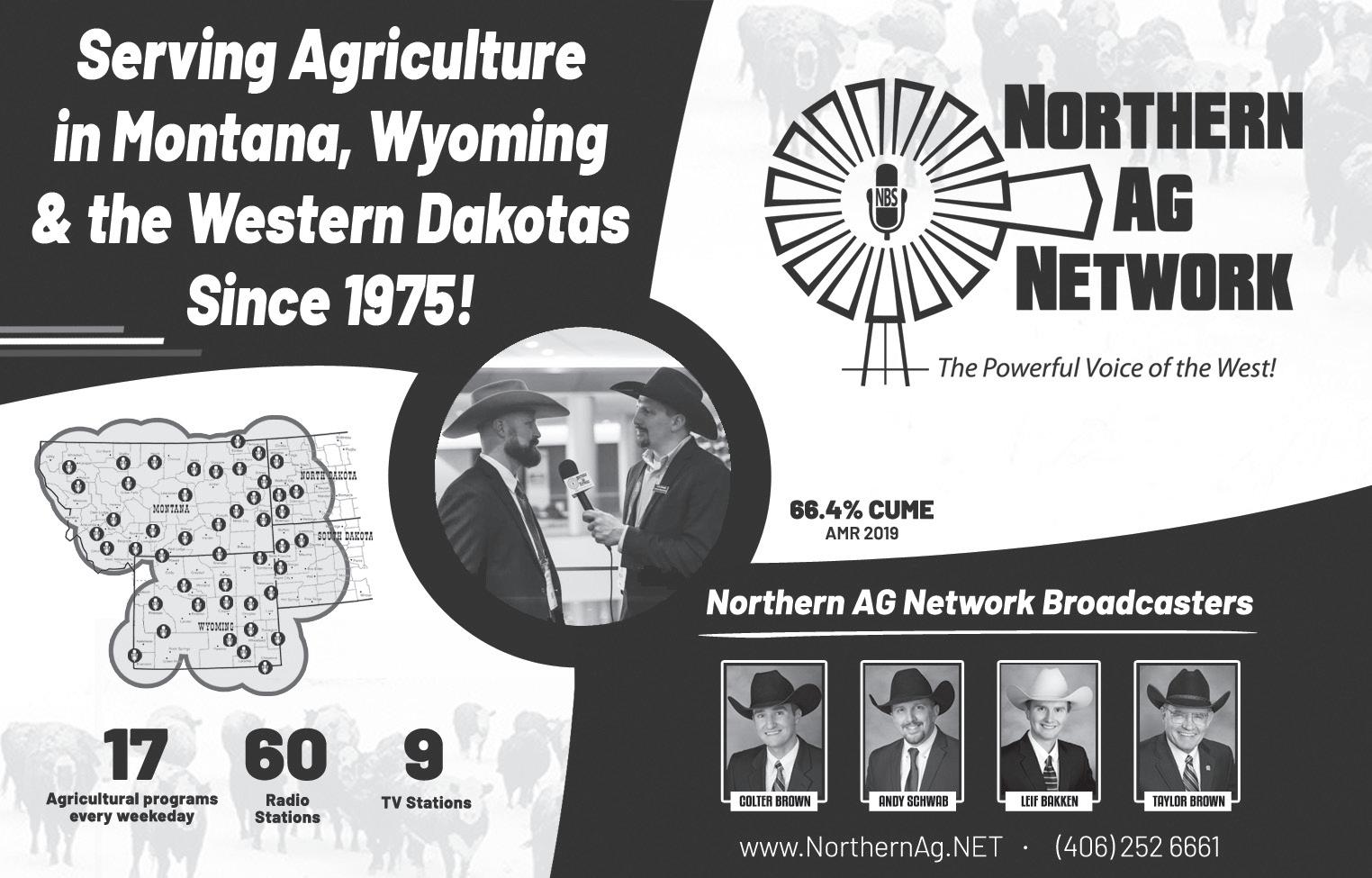
33 minute read
cow considerations
By Chance Marshall, UW Extension Educator
Cull Cow Considerations
Advertisement
Like many things in the world right now, the annual costs of maintaining a beef cow is much higher than normal. Sources indicate it takes at least $750 per year for most cow/calf operations to “keep a cow.”
This number may seem ridiculously high; however, once the many expenses required to maintain her such as feed, equipment, labor, vet expenses, etc. is considered, costs can add up quickly. Producers should consider the elevated impacts of decisionmaking for culling cows this year. While the market for feeder cattle may be out of producers’ control, the decisions made within cowherds are controllable.
Impactful decisions
Most cow/calf producers (including myself) are probably guilty of keeping one of their favorite cows for “one more year” after she comes up open. Most times, these decisions are made because of sentimental reasons. Many of these operations also have cows 13 plus years old and even though they are still productive, they are starting to show signs of aging.
These decisions can be impactful when studied from a business perspective. Receipts from cull cows make up about 15 to 20 percent of gross income for cow/ calf operations; however, the costs of maintaining a nonproductive cow can be the real difference maker. Culling decisions directly affect the quantity and quality of calf production and, ultimately, influence profitability.
The truth is, putting cows on the truck with sentimental attachments and/ or have been some of our most productive herd members in the past is hard. But knowing when it’s time to make these tough decisions can be very impactful to genetic progress and producers’ bottom line.
How do producers know when? With profitability in mind, here are a few key things to consider when developing a systematic process for culling cows all members of the herd should be exposed to.
Pregnancy status
Pregnancy status is probably the most obvious factor when determining whether to keep a cow or not. It’s recommended producers determine how long they want their breeding and calving periods to last.
Forty-five to 60 days is usually ideal. It is recommended to cull cows that aren’t pregnant after the 45 to 60 day timeframe.
If she’s not producing a calf, she is costing hundreds of dollars per year to keep her around. It’s important to ask the question, how much are producers willing to pay to keep an open cow?
Structural soundness
Many producers in Wyoming have high expectations for cows to graze and perform in harsh, vast environments. Cows remaining sound enough on their feet to maintain body condition, calve and rebreed every year is imperative.
Structure issues tend to only get worse with time and eventually will catch up with them. Identifying structure problems early should always be a priority.
Body condition
Body condition is a huge indicator of reproductive success. Cows lacking body condition have higher probabilities of being open cows. Additionally, thin cows have greater chances for calving difficulty.
Even if thin cows are getting bred during the breeding season, it may be possible she is calving a few days later each year, her calf weights are declining and she will eventually fall out of the 365-day ideal calving window.
Udder quality
Not only is milk production important for calf growth, but so is the structure and quality of the udder. It’s important to consider if her udder is still adequate to meet the needs of her calves going forward.
Does she have four good productive udders with good teat attachments? Will her calves be able to easily access the milk they need? Selection for udder quality is a moderately heritable trait, so maintaining dams with good udder attachment should be included in the selection criteria.
Mouth
The cow needs to have enough teeth to graze and ruminate effectively. Aged cows may lose teeth or wear them down enough to negatively impact their ability to maintain the demands of pregnancy and her environment. A bad mouth can affect digestibility and intake, putting her at risk of being an open cow.
Disposition
It always seems the meanest cows breed back every year and raise some of the best calves. However, maintaining cows with attitude problems will likely mean future generations with attitude problems.
Even if these crazy calves do well in a range setting where they are not handled much, they will likely struggle to gain as much in the feedlot compared to their gentle herd mates. Additionally, meat quality in temperamental cattle is often less desirable.
Other health issues
A cow’s history of various health issues can cost producers money and may cost more in the future. Cows with incidences of retained placentas or prolapses are at risk for reoccurring issues and should be strong culling candidates.
Also, cows having dealt with infections, lump jaw and other issues are also at risk. Consider selling these females while they are recovered, more valuable and before they are sick again.
Making the reasonable decisions to cull cows is not easy, but these decisions are an important piece of the profitable production puzzle. Hopefully these considerations will make those decisions a little bit easier.
Chance Marshall is a University of Wyoming Extension educator based in Fremont County. He can be reached at cmarsha1@uwyo.edu or 307332-2363.

Austin Snook • 307-290-2161 Taylor Snook • 307-290-2273 Craig Deveraux • 307-746-5690
Dan Catlin • 406-671-7715 Clint Snook • 307-290-4000 Cheyenne Seymour • 605-641-0638
"From the ring, to the video, and in the country, we market your livestock the competitive way."
Market Report • July 13, 2022

Lighter test on all classes, with weigh up cow and bull markets steady to slightly softer after the holiday. All species and sheep special with regular cattle sale next week.
HEIFERETTES
FRONTIER CATTLE CO, KAYCEE 5 BLKHFRTTE 1005 104.00 WT 1,045.20 JASON GEARHART , GILLETTE WY 4 HEREHFRTE 928 118.00 WT 1,094.45 1 HEREHFRTE 945 128.00 WT 1,209.60 REINKE PROPERTIES, SHERIDAN 1 BLKHFRTTE 1005 100.00 WT 1,005.00 POWDER RIVER RANCH INC , ARVADA 2 BLKHFRTTE 1118 106.00 WT 1,184.55 PERRY RANCH INC. , SHERIDAN WY 6 BLKHFRTTE 1157 106.00 WT 1,226.06 1 BLKHFRTTE 1225 94.00 WT 1,151.50
COW
TERRANCE, CINDY PERSSON, GILLETTE 15 BLK-COW 1368 89.50 WT 1,224.36 6 BLK-COW 1228 88.00 WT 1,080.20 7 BLK-COW 1421 86.50 WT 1,228.91 3 BLK-COW 1305 86.50 WT 1,128.82 2 BLK-COW 1520 84.00 WT 1,276.80 1 MXD-COW 1265 84.50 WT 1,068.92 IBERLIN RANCH , BUFFALO WY 11 BLK-COW 1419 87.50 WT 1,241.70 KINCHEN LAND & LIVESTOCK , KAYCEE 1 RED-COW 1420 84.50 WT 1,199.90 2 RED-COW 1405 85.00 WT 1,194.25 FRONTIER CATTLE CO LLC , KAYCEE 4 BLK-COW 1495 86.50 WT 1,293.17 2 BLK-COW 1360 84.50 WT 1,149.20 TYE CURUCHET , KAYCEE WY 1 BLK-COW 1265 87.50 WT 1,106.87 KAREN K. KITHAS , KAYCEE WY 2 BLK-COW 1553 87.00 WT 1,350.67 DEAD HORSE CREEK, BUFFALO WY 1 BLK-COW 1225 87.00 WT 1,065.75 4 BLK-COW 1406 87.00 WT 1,223.43 1 BLK-COW 1130 83.00 WT 937.90 JARED SCHAEFER , SHERIDAN WY 2 MXD-COW 1465 81.00 WT 1,186.65 REINKE PROPERTIES LLC, SHERIDAN 1 BLK-COW 1570 83.50 WT 1,310.95 1 BLK-COW 1255 94.00 WT 1,179.70 ZACH SCOFIELD , SHERIDAN WY 1 BLK-COW 1575 83.00 WT 1,307.25 POWDER RIVER LIVESTOCK, ARVADA 2 BLK-COW 1475 86.50 WT 1,275.87 CODY SHAW , BUFFALO WY 1 BLK-COW 1255 87.00 WT 1,091.85 POWDER RIVER RANCH, ARVADA 4 BLK-COW 1315 86.00 WT 1,130.90 5 BLK-COW 1477 86.00 WT 1,270.22 1 BLK-COW 1335 75.50 WT 1,007.92 LITTLE RANCH CO INC , LEITER WY 11 WHT-COW 1435 88.00 WT 1,262.80 2 WHT-COW 1438 84.00 WT 1,207.50 1 WHT-COW 1490 86.00 WT 1,281.40 1 WHT-COW 1280 86.00 WT 1,100.80 RODERIC A ROSS , WYARNO WY 3 BLK-COW 1458 86.00 WT 1,254.16
2 BLK-COW 1175 93.00 WT 1,092.75 BELUS BROS INC , BUFFALO WY 7 BLK-COW 1630 84.00 WT 1,369.20 1 BLK-COW 1370 85.00 WT 1,164.50 PERRY RANCH INC. , SHERIDAN WY 1 BLK-COW 1410 84.50 WT 1,191.45 1 BLK-COW 1555 85.00 WT 1,321.75 1 BWF-COW 1205 80.00 WT 964.00 LOVE LAND & CATTLE, SHERIDAN WY 1 BLK-COW 1595 79.50 WT 1,268.02 1 BLK-COW 1450 85.00 WT 1,232.50 1 BLK-COW 1305 85.00 WT 1,109.25 1 BLK-COW 1765 79.00 WT 1,394.35 1 BLK-COW 1805 78.00 WT 1,407.90 2 BLK-COW 1525 77.50 WT 1,181.87 BRETT OR DARCY DELAPP, KAYCEE 2 MXDCOW LH 1018 72.00 WT 732.60 2 MXDCOW LH 1085 65.00 WT 705.25
BULLS
JOHN JR. ZEZAS TRUST , BUFFALO WY 1 HEREBULL 2435 104.00 WT 2,532.40 1 BLK-BULL 1935 102.00 WT 1,973.70 IBERLIN RANCH , BUFFALO WY 1 RED-BULL 1775 106.00 WT 1,881.50 1 BLK-BULL 1935 100.00 WT 1,935.00 1 BLK-BULL 1880 108.50 WT 2,039.80 1 BLK-BULL 1925 100.00 WT 1,925.00 JOSEPH M. HARRIET , BUFFALO WY 1 BLK-BULL 2110 110.50 WT 2,331.55 1 BLK-BULL 2190 106.00 WT 2,321.40 KINCHEN LIVESTOCK, KAYCEE 1 RED-BULL 1175 114.00 WT 1,339.50 FRONTIER CATTLE CO, KAYCEE WY 1 BLK-BULL 1875 114.00 WT 2,137.50 1 BLK-BULL 1990 108.00 WT 2,149.20 TYE CURUCHET , KAYCEE WY 1 BLK-BULL 1775 106.00 WT 1,881.50 AG RESERVES INC. , WOODRUFF UT 1 RED-BULL 1980 117.00 WT 2,316.60 1 BLK-BULL 1675 108.00 WT 1,809.00 DON, BETTY BROWN TRST, RECLUSE 1 BLK-BULL 1985 107.00 WT 2,123.95 FADDIS-KENNEDY CATTLE, SHERIDAN 1 HERE-BULL 2090 110.50 WT 2,309.45 1 HERE-BULL 1795 96.00 WT 1,723.20 1 HERE-BULL 1530 97.00 WT 1,484.10 1 HERE-BULL 1680 105.50 WT 1,772.40 TOM, DEB GORZALKA, CLEARMONT 1 BWF-BULL 1900 116.50 WT 2,213.50 LITTLE RANCH CO INC , LEITER WY 1 WHT-BULL 1900 119.00 WT 2,261.00 RODERIC A ROSS , WYARNO WY 1 BLK-BULL 1890 113.00 WT 2,135.70 BELUS BROS INC , BUFFALO WY 1 BLK-BULL 1745 104.50 WT 1,823.52 GOSNEY RANCH , KAYCEE WY 1 RED-BULL 1735 105.00 WT 1,821.75
Upcoming Sales
July 20 • All Species Special • Regular Sheep & Goat Sale • Horses • Regular Cattle Sale
July 27 • Regular Cattle Sale August 3 • No sale Enjoy the Johnson County Fair!! August 10 • Regular Cattle Sale August 17 • Feeder Lamb Special • All Species • Regular Sheep & Goat Sale • Horses • Regular Cattle Sale
August 24 • Yearling Special • Regular Cattle Sale August 31 • Feeder Lamb Special • Regular Sheep & Goat Sale • Regular Cattle Sale September 7 • Yearling Special (Free BBQ) • In House Video Sale • Regular Cattle Sale September 9 • Full House Horse Sale (Big Horn Edition)
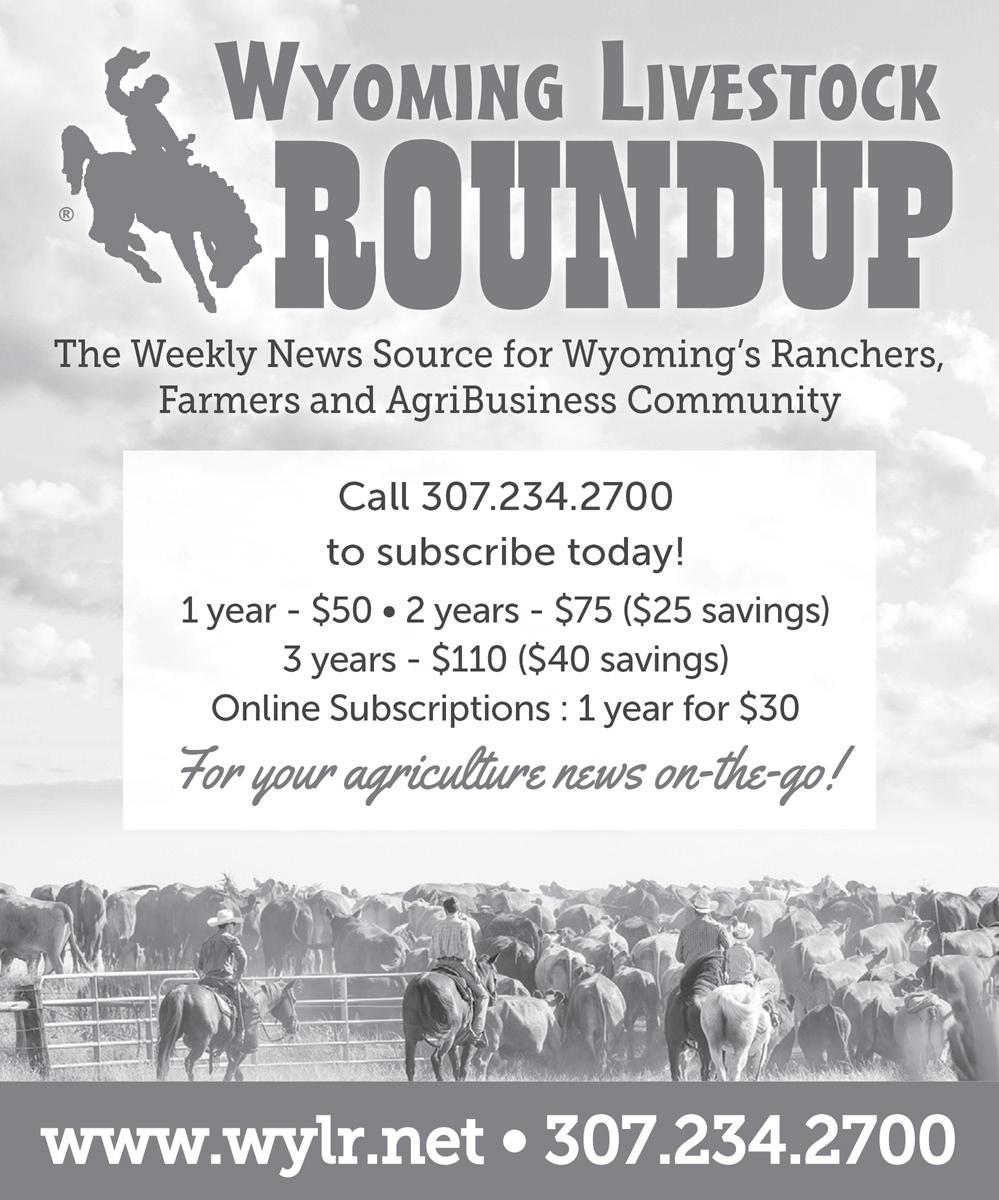
By Paul Dykstra
Market update
The cash fed cattle market trend this summer has been quite positive in relation to history. Prior to the COVID-19 pandemic, cattle feeders could count on cattle supply and beef demand factors aligning to set annual price highs in the spring of the year. April was typically the target month for the high, but realistically any time from April through mid-June would capture the annual high.
So far, the 2022 market has followed a relatively flat pricing pattern. Unlike the stereotypical pattern described above, the yearto-date high was posted just two weeks ago with $146 per hundredweight (cwt) edging out the spring high of $143 per cwt. The relatively late arrival of higher prices continues to be spurred by fewer market-ready, premium grading cattle in the most active cash trading area in the North.
Beef demand is proving to be more resilient than expected. While it is lower than recent years, it appears to be leveling off. Inflationary impacts are certainly a factor as retailers and distributors have held beef prices on a higher plane to accommodate increased input costs.
Carcass cutout values have traded in a very stable pricing environment since late April. The Choice cutout has moved little with a range of $257 per cwt to $267 per cwt during this time.
Similarly, the Certified Angus Beef (CAB) cutout has traded from $272 per cwt to $284 per cwt for the period. The latest Choice cutout value is eight percent lower than a year ago and the CAB cutout is 11 percent lower.
Entering mid-July, lower beef prices are predicted through the dog days of summer. The traditional lower price trend for this period tends to translate into summer lows sought in the market through the first week of August.
Last week’s CAB cutout was slightly lower than the prior week with a $4.25 per cwt decline. Given May and June wholesale beef prices did not undergo the tremendous spikes seen in the past two years, the transition to July has not generated significant price declines so far. However, ribeye and strip loins have finally given up some of their June value, as both items were the notably cheaper cuts in last week’s boxed beef trade.
Carcass weights find annual low
Since the COVID-19 onset, carcass weights have been on a short list of market-influencing talking points in the cattle sector. In May 2020, national average weights rocketed to as much as 48 pounds heavier than the year before. Since this devastating period, weights have struggled to find significantly lower levels.
A final push of backedup supplies of fed cattle in the first quarter of 2021 saw carcasses continue to mark new highs. Cattle numbers in the following quarter brought more current and weights dropped 18 pounds in two weeks to match the weekly average of the year prior.
Jumping ahead to 2022, a slow packing sector pace kicked off January with a quick recovery to more impressive daily harvest levels in February. Carcasses still tracked a heavier path than the prior year from February through early May, finally pulling lower.
The annual average carcass weight low appears to have been made during the week of June 13, with steers averaging 879 pounds and heifers averaging 810 pounds. Heifers declined yet another pound in the following week’s data, but steers increased four pounds that week to move the average upward again.
Weights now begin their steady climb to their expected November annual heaviest. Reviewing cattle placement in feedlots this year suggests fewer fed cattle supplies expected in the fourth quarter along with much higher costs of gain will hold carcass weights below a year ago. This will be dependent on the basis trend (cash minus futures price) which guides cattle feeders’ decisions regarding marketing timing.
End-user demand for premium quality grade carcasses remains sharp today, given the premium spreads between grades including CAB carcasses. While impossible to perfectly project carcass values months in advance, the supply and demand evidence we see today suggests fourth quarter premiums for quality could shape up to be quite strong.
Angus youth achieve carcass excellence
The National Junior Angus Show, conducted annually in July, is best known as a place where junior Angus members display breeding heifers in the show ring. However, it’s the carcass steer competition, possibly less famous as far as junior cattle shows are concerned, bringing the level of competition to new heights this year.
Forty-two registered Angus steers were harvested in this year’s contest. This exemplary set of cattle graded 30 percent Prime, 60 percent CAB brand (calculating both Prime and Premium Choice) and just seven percent Select. The Prime carcass percentage more than tripled the recent industry average and the CAB share was almost double the brand’s recent average.
The real highlight in this set of steers is the fact nine head, or 21 percent of the carcasses, were Prime, beef carcass yield grade two’s. It appears in the data they would also have qualified for CAB Prime. It’s a fairly special set of cattle that can hit such a lofty marbling achievement while remaining this lean in terms of their finish, with the Prime yield grades averaging a mere 0.36 inches of backfat thickness.
Readers may quickly recognize backfat measures in commercial fed cattle today are more commonly or well above 0.5 inches. While these steers could have been fed longer in a commercial setting, we might argue they were fed to their most feed-efficient endpoint in the hands of these junior Angus exhibitors. Our congratulations to this group of exhibitors for setting their sights on excellence and achieving it.
Paul Dykstra is the assistant director of supply management and analysis at CAB. He can be reached at pdykstra@certifiedangusbeef.com


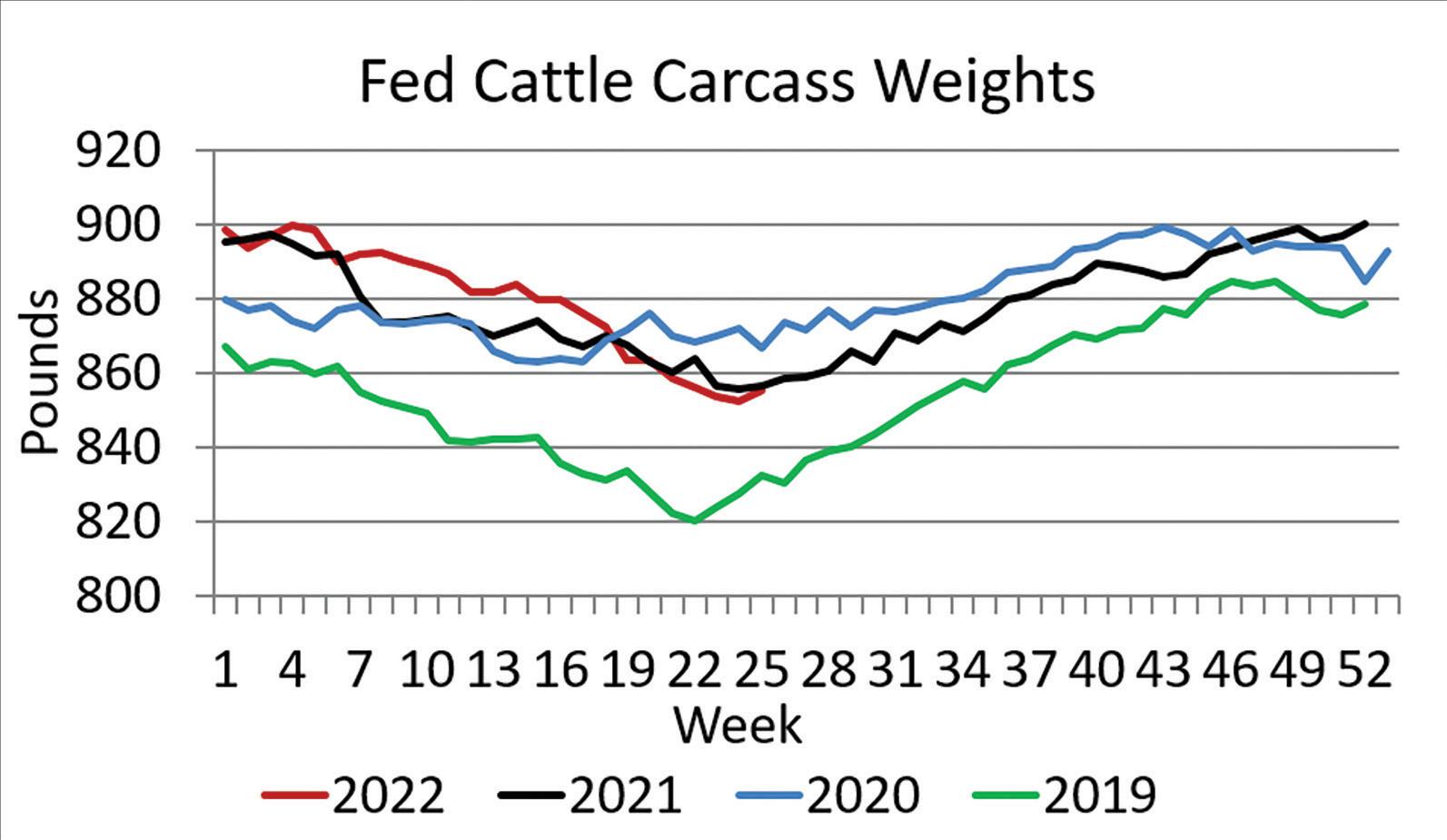

WHEN YOU’RE STARTING IN AGRICULTURE,
MONEY IS ONLY ONE THING YOU NEED.
Your future in agriculture is our future, too. It’s why we work so hard to help young and beginning producers grow and succeed. Discover unsurpassed expertise, digital tools and money- saving programs.
Learn more by calling the Casper offi ce at 307.577.4700.
1401 Wilkins Circle Casper, Wyoming
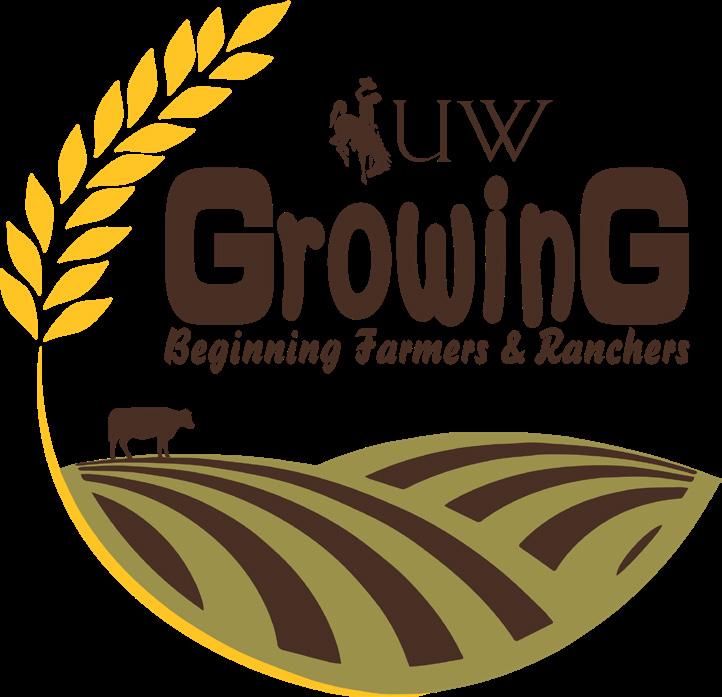
Getting Started in Ag: Evaluate Your Financial Position with RD Financial
If you are new to production agriculture, just starting out, or even running a part-time venture, you probably have more than enough daily business concerns. Day-to-day activities can take over quickly, leaving the financial management side of the business to take a back seat.
It is important to remember, however, that production agriculture in today’s unstable world is a diverse and often complex business that requires sound management practices. Successful financial management depends on the ability to construct and properly interpret financial statements. In addition, it is essential to understand how the financial ratios associated with these statements work and what they can tell you about your business.
Over the long term, up-to-date financial analysis is a key part of becoming and remaining profitable. It is important from a risk management standpoint, where a comprehensive picture of the financial health of the business allows you to better plan for uncertainty. It also provides the manager with a better understanding of what a lender might conclude when evaluating the operation. Analysis offers a measure of the financial position and overall performance of the business, as well as identifying potential issues and allowing time to make changes before they become emergencies.
RD FINANCIAL FROM RIGHTRISK.ORG
RD Financial is an interactive tool designed to demonstrate the relationships between the financial statements and financial performance of the business. The tool uses a step-by-step approach that allows the user to enter their own data or modify pre-existing example data.
RD Financial generates four financial statements from the information entered: an income statement, cash flow statement, balance sheet and statement of owner equity. It also produces a set of financial ratios, based on the data entered. The tool includes help functions and allows users to save their information or reset and start over. For a detailed presentation on the RD Financial Tool, select “Tool Support” from the opening menu or view an online presentation at RightRisk.org. Those outputs and the activities that generate them are often called enterprises. It is important to consider data for all enterprises when building financial statements.
The first step to using RD Financial is to enter the necessary financial data. This includes completing sections for crop revenue and expenses; livestock revenue and expenses; taxes and insurance; assets and liabilities; and miscellaneous and overhead expenses.
The example input form offers an illustration of how these revenues are allocated by enterprise. Crop expenses are split by enterprise as well, and the tool includes extra space for users to include expenses not otherwise listed. Taxes and insurance (except crop insurance) are entered for the entire operation, followed by asset and liability values. The tool accounts for both short-term and long-term liabilities and calculates real estate values based on per acre estimates entered by the user.
GENERATING FINANCIAL STATEMENTS
RD Financial generates the four basic financial statements. The balance sheet lists values of assets and liabilities for the business along with overall net worth. The cash flow statement outlines the farm’s sources and uses of cash, income, and expenses as well as the monthly inflows and outflows of cash. The accrual-adjusted income statement is the true measure of profitability for any business and lists both cash and non-cash effects on the bottom


line for the year. The statement of owner equity provides the details required to calculate changes in net worth from year to year.
RD Financial helps users see the interaction of information entered across the financial statements; the statement of owner equity provides the needed reconciliation and highlights any discrepancies in the information entered.
IMPORTANT FINANCIAL RATIOS
RD Financial generates a set of 16 financial ratios based on the financial statements. These ratios are divided into five categories and are commonly used by lenders to evaluate a borrower’s financial situation. Categories include liquidity, solvency, profitability, repayment capacity and financial efficiency.
To see a detailed explanation of each ratio, simply click the Off/On button next to each ratio. The tool generates a gauge of each ratio (red to green) based on industry standards to indicate a level of concern for the calculated value.
CREDIT SCORING
RD Financial includes a credit-scoring model intended for educational purposes. This section gives two examples of how a lender might evaluate the creditworthiness for two different loan models: operating and term loans. The tool generates a credit score for each loan type, based on the information provided. The operating loan model relies on four financial ratios, each with a score from 1 to 5 (1=excellent, 5=high risk). For the example farm, low debt levels help to offset the rather low profitability numbers to rate the operating loan score at 1.6. This feature offers the user a way to identify and address problem financial areas before meeting with a potential lender.

RD Financial ratio screen
MORE FROM RIGHTRISK.ORG
The RD Financial Tool is just one of many useful resources RightRisk.org offers for new and beginning producers. Visit RightRisk.org to access numerous online tools and courses, including a wide variety of agricultural risk management topics ranging from crop insurance to production management, risk calculators, estate planning and more. These resources provide invaluable insights to those new to agriculture.
OTHER TOOLS AVAILABLE AT RIGHTRISK.ORG:
• Forage Risk Analyzer • Risk Scenario Planner • Multi-Temporal Risk Analyzer • Enterprise Risk Analyzer
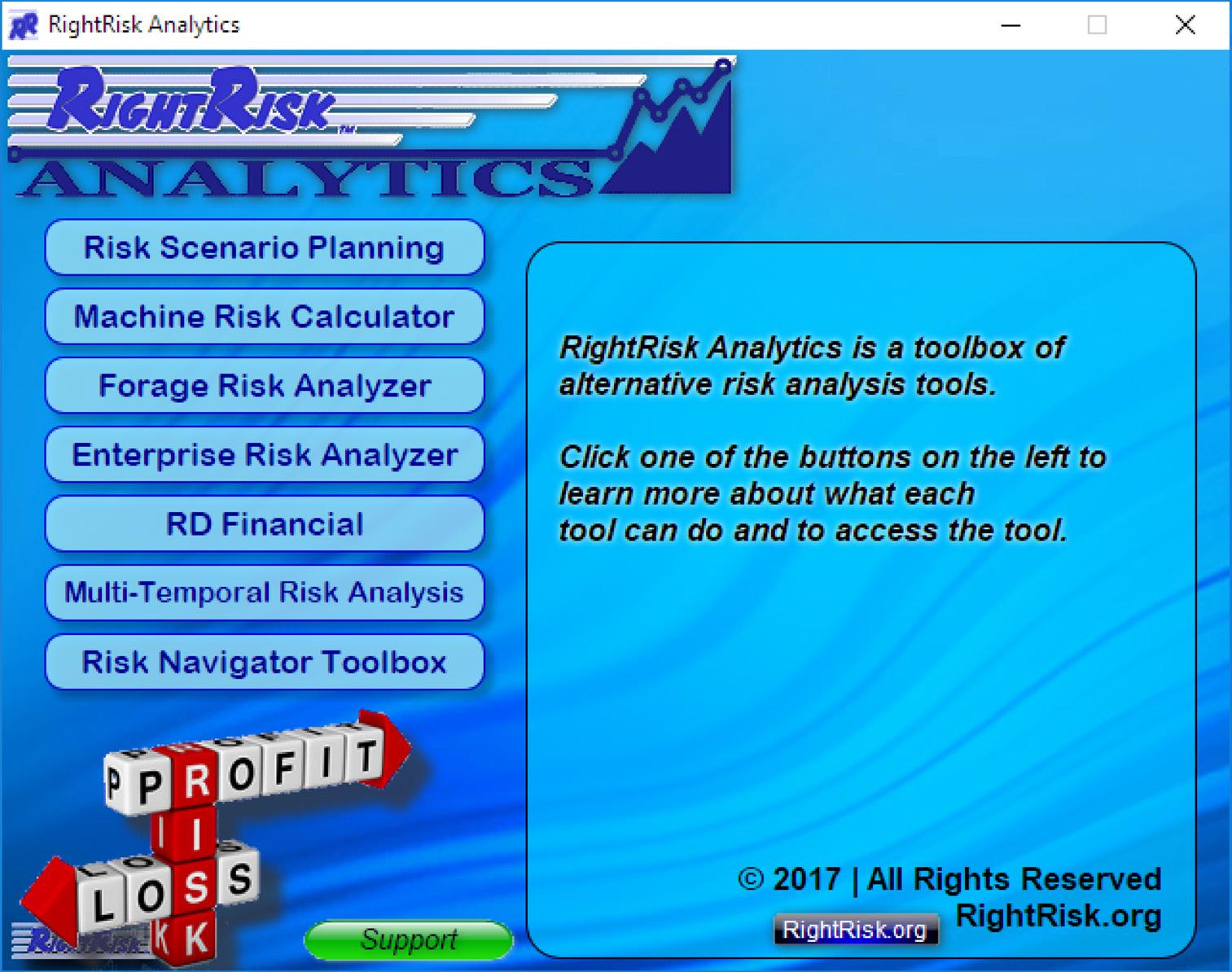
having a fun time with her 4-H friends – playing card games and socializing in their free time – and competing in livestock shows.
“When you are a livestock kid, you are in the Heritage Arena every day, all week, so we hang out and play cards during the fair, which is a highlight for me,” she says.
Eliza has also been showing since she was eight years old, and this year will be her final year in 4-H, as she recently turned 18. She is showing a lamb named Tom Cruise and a pig named Peaches this year.
“I just want to do as well as I can – hopefully win – and have a lot of fun doing it since it’s my last year,” she says.
Life lessons
Kate and Eliza are both grateful for the many skills 4-H has provided them through the years.
“I think the biggest skill 4-H members learn is leadership and developing the personality to be able to succeed,” says Kate. “We can persevere through anything. Being able to talk in front of people and lead a group is a really important skill 4-H teaches everyone.”
“The senior members in our group are outstanding,” she adds. “They can get in front of a group of people and lead a presentation because they have those leadership skills.” 4-H helps develop responsibility, says Eliza.
“It’s a lot of responsibility to take care of animals,” she says. “I have to take care of them every day if I want to do well. I also spend a lot of time working with my animals.”
She also says 4-H members value sportsmanship.
“You don’t always do as well as you want to,” Eliza says. “Even if I don’t do as well is I hoped, I still congratulate the winners and everyone else I show with because they tried their best too.”
Past accomplishments and goals for this year
Kate and Eliza share they have many proud 4-H accomplishments and they hope to have even more at the end of this year’s fair.
“In my first year competing in the senior horse division, I showed my horse to win the all-around horse and rider which was a really exciting moment,” says Kate. “I got to compete against my older brother and the older group of 4-H’ers. It was a really close competition between all of us, so it was a really proud moment when I won.”
Eliza says her proudest 4-H accomplishment was making it to the Wyoming State Fair in 2021.
“I went to the state fair last year which was a really cool accomplishment, and I won fifth in my market class at the fair,” she says.
Kate says aside from competing, she hopes to enjoy time with her friends and family at the fair this year.
“One of my biggest goals is to relax and have a good time,” she says. “It’s really easy to go into shows and have big goals but I think having a good time is what it’s all about. It’s easy to get caught up in the show day and week and get frustrated, so just relaxing and having a good time with my friends is going to be a goal for me.”
Upcoming county fairs
There is no shortage of fun-filled county fairs taking place in the Cowboy State this year.
Upcoming county fairs include the Converse County Fair in Douglas, July 16-24; the Weston County Fair, July 23-31, in Newcastle; the Washakie County Fair in Worland, July 23-30; the Crook County Fair, July
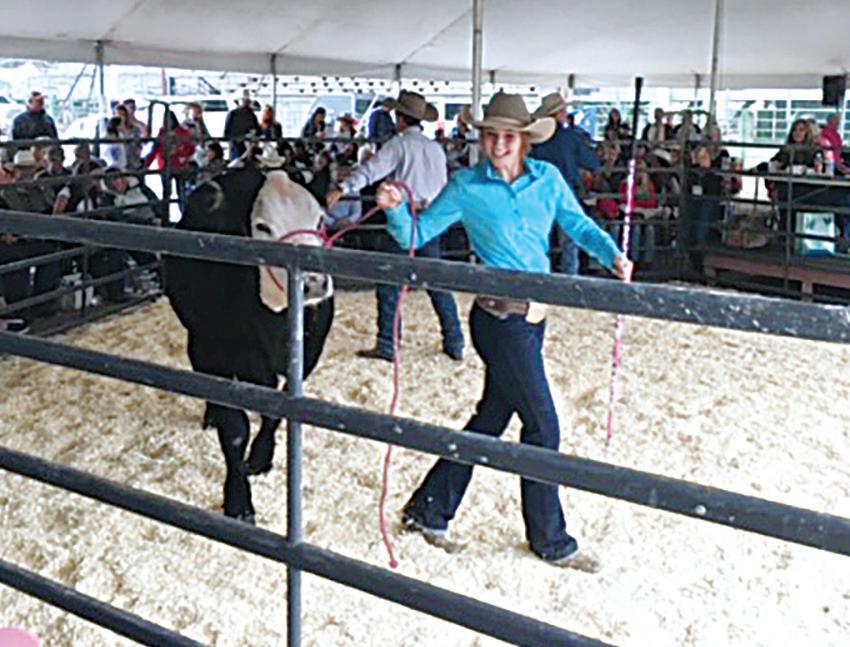
Show time – Kate Budge proudly shows her steer during the livestock sale. Courtesy photo
111 Years of

July 26-30, 2022
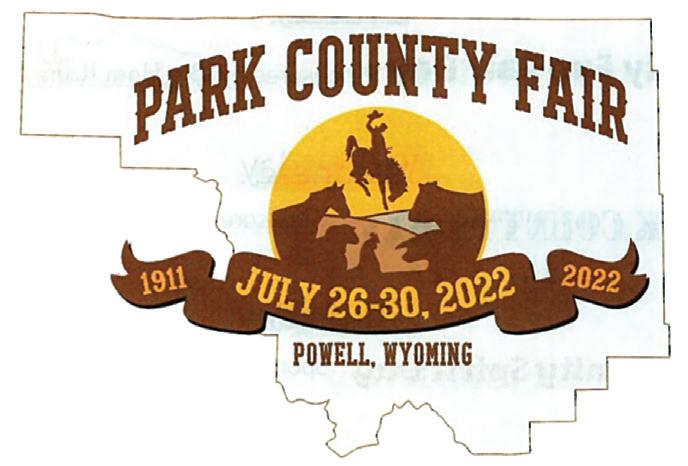
Wednesday, July 27 Outlaw Rodeo
Gates open at 6pm/7pm start Main Grandstands
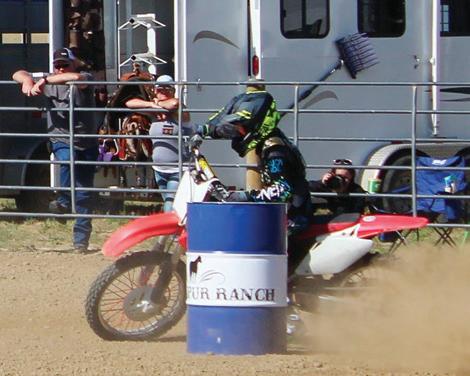

Thursday, July 28 concert
Gates open at 6pm/7pm start Main Grandstands
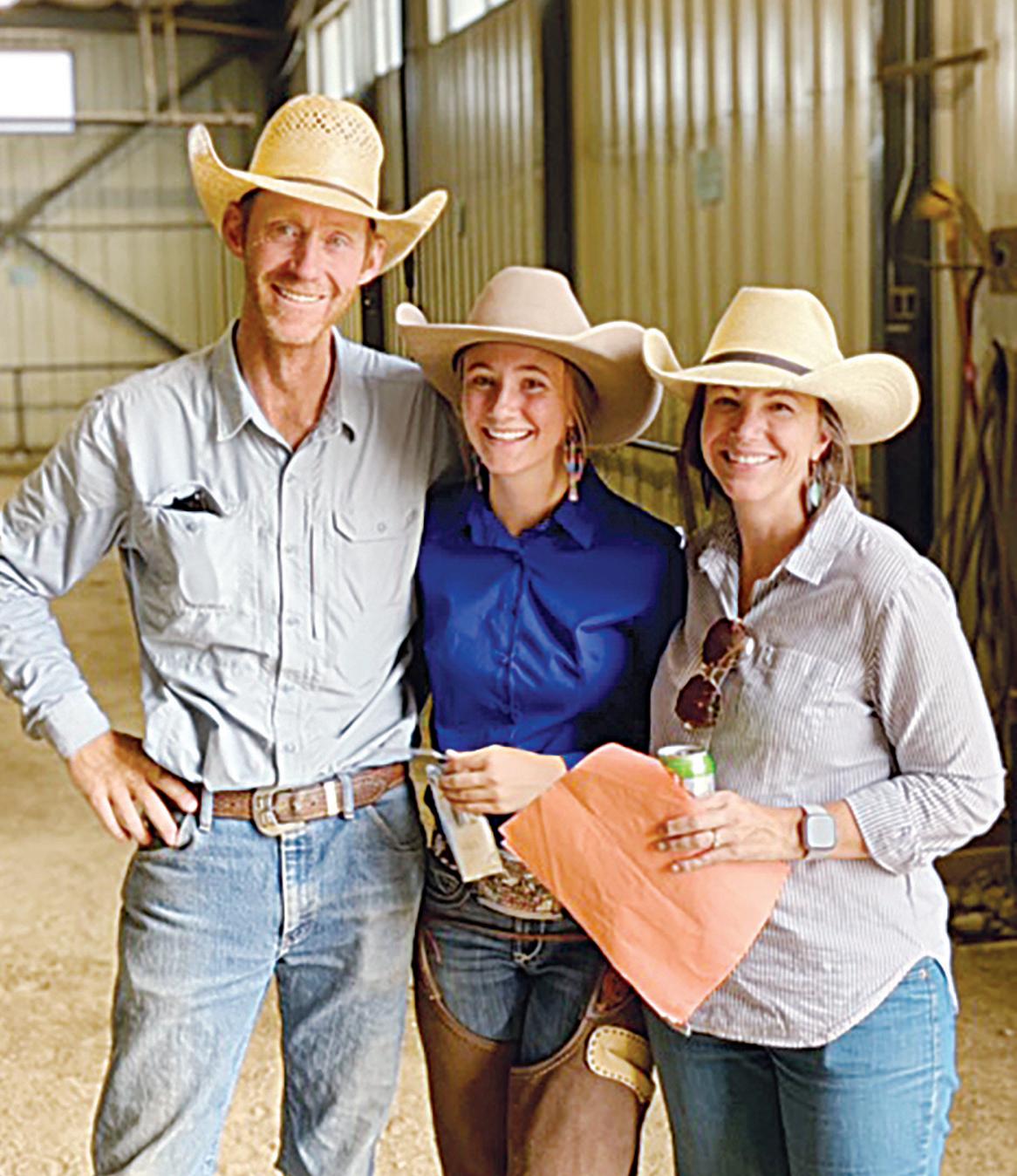
Family tradition – The Budge family enjoys spending time together during the week of the Teton County Fair. Pictured left to right, Joey Budge, Kate Budge and Nicole Budge. Courtesy photo
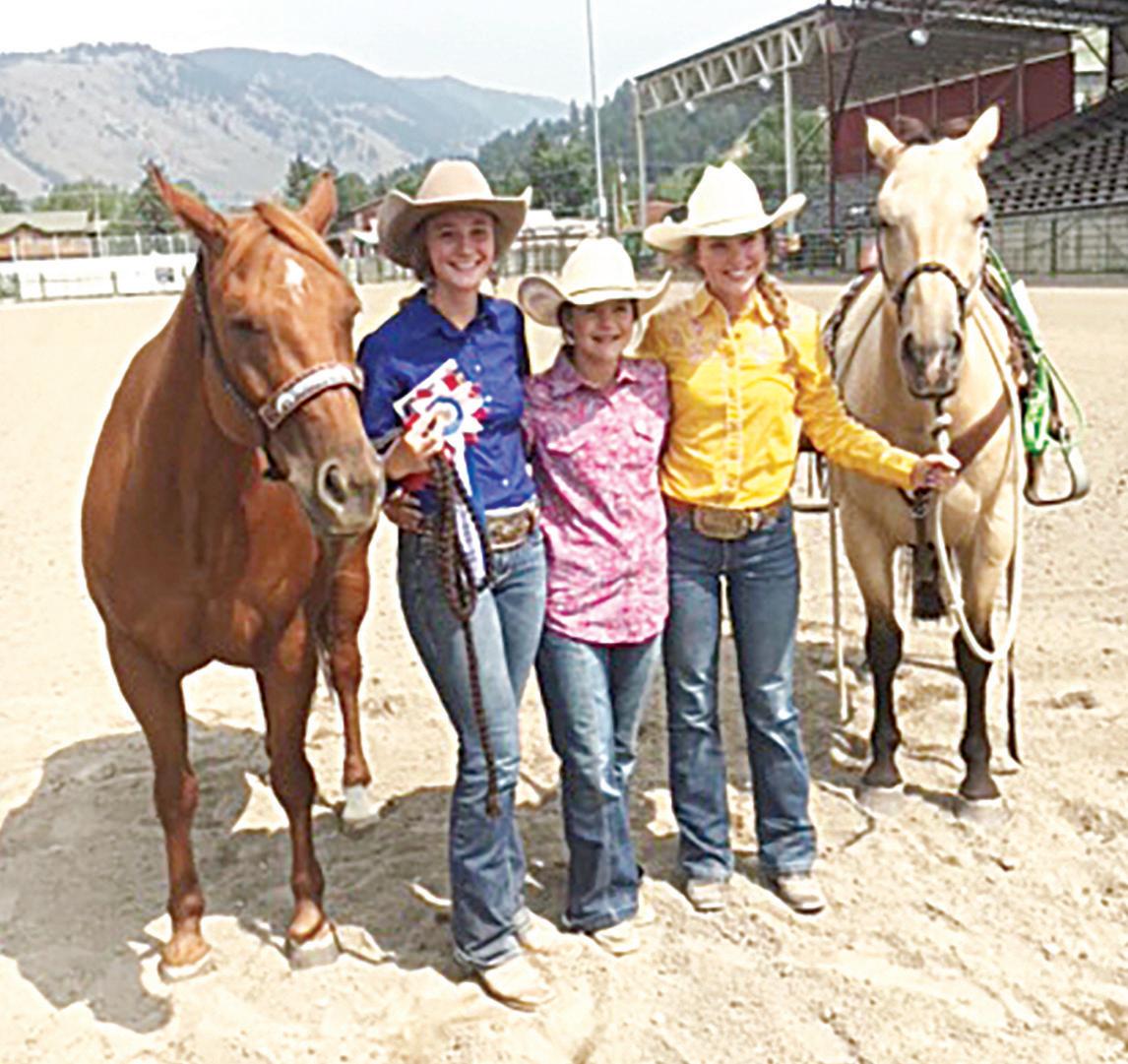
4-H friends – One of Kate’s favorite parts about 4-H is the lifelong friendships she’s made through the club. Pictured left to right, Kate Budge, Bailey Chamberland and Riley McFarland. Courtesy photo 23-31, in Sundance; the Park County Fair in Powell, July 26-30; and more. Kaitlyn Root is an editor for the Wyoming Livestock Roundup. Send comments on this article to roundup@ wylr.net.
Friday, July 30 Motocross
Gates open at 5pm/6pm start Main Grandstands
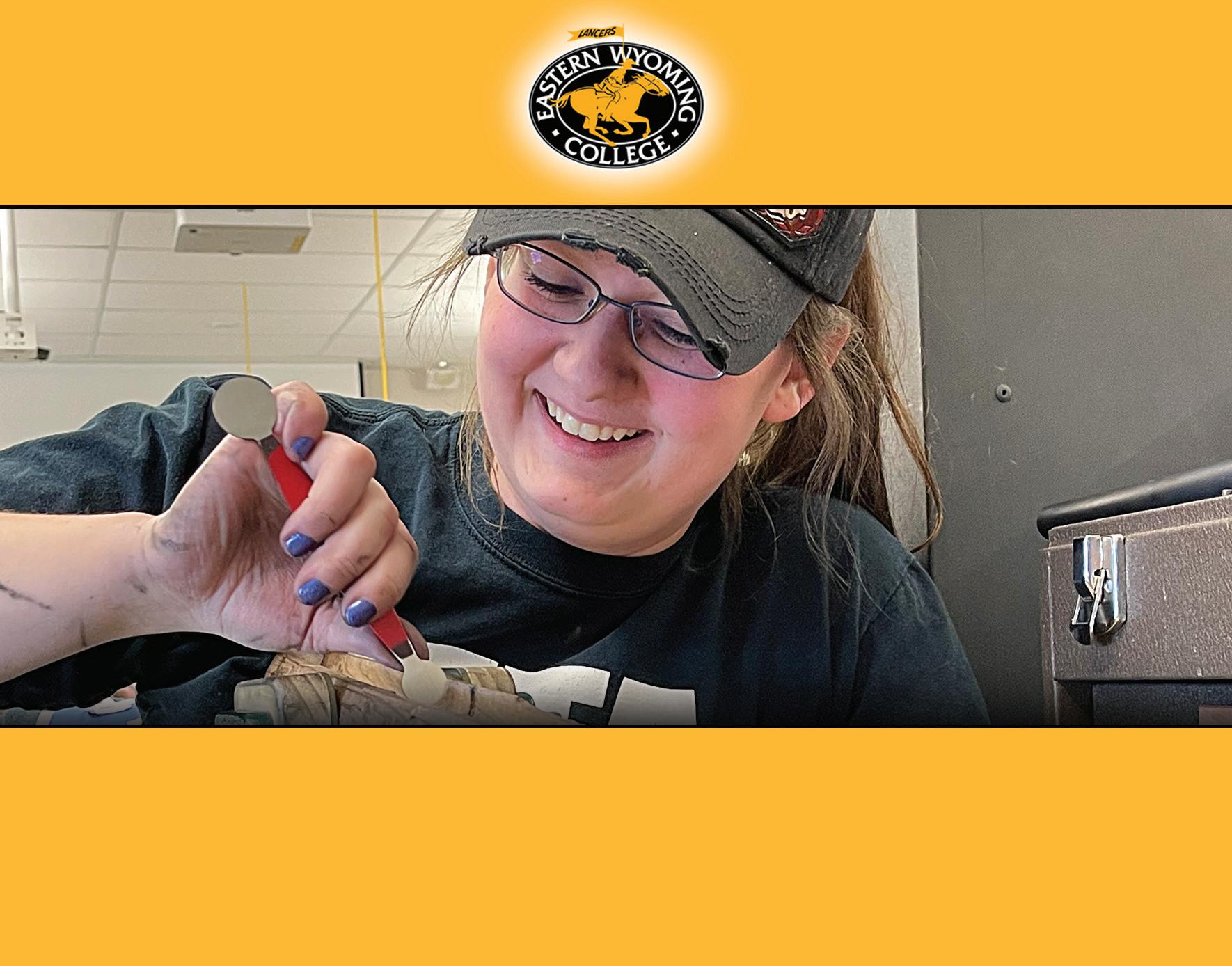
Saturday, July 31 demolition derby
Gates open at 5pm/6pm start Main Grandstands

Charge into your future this fall at EWC
sively manage both larger and smaller flocks.”
“The labor savings go both ways,” he adds. “If producers only have a few hours on a weekend to work sheep and need the process to be extremely productive – RFID allows producers to do so.”
In addition, RFID allows producers to follow animals through the supply chains of major meatpackers.
“With RFID being an electronic radio frequency, the tag does not have to be in a line of sight,” he says. “The tags can be read through tissue in the ear and the animal can be moving – producers don’t have to restrain the animal in order to visually read an ear tag.”
Manning shares several benefits of EID management tools include adding a second form of identification, having a faster way to collect data of animals being worked, using an electronic version versus pen and paper and saving labor and time.
For producers who manage animals individually, EID provides more accurate data per ewe or lamb, cuts labor and ties in with software, scales and other management tools to increase speed and accuracy. It allows ease of individual data collection for growth, wool and other traits, says Manning.
“When producers are manually managing data, there is human error,” he says. “With EID, producers can cut back on the potentional for human error.”
RFID components
There are several different components to a RFID system. The first is RFID devices – ear tag, implant or bolus – have a chip in them which can be read, Persons explains.
“There are two different types of RFID tags – a passive and an active tag,” mentions Manning. “The passive RFID does not have an internal battery – they are powered by the reader while the active RFID are powered by a battery.”
There are two main different styles of ear tags. A button-style tag consists of a large coil copper of wire serving the antenna and a small microchip attached to the antenna talking back and forth to a reader.
There are also barrellike shaped EID chips of very tightly wound copper, antenna and a microchip all incased in a tube of glass.
“This style can be very small and lightweight and placed into many different configurations,” Persons says.
RFID devices can be purchased as a scrapie tag, he says. These are commonly referred to as an RFID 840 tag.
“To order the electronic scrapie tags, producers must have a scrapie flock identification number and a national premise number,” he says. “The RFID 840 tag will have a 15 digit RFID number printed on it. This number is mandated to be printed on the outside of the tag.”
The RFID chip number must start with the number 840 – the U.S. code worldwide.
“If producers ship animals from the U.S. to any other country, and they read the tag, it will start with an 840,” he says. “The RFID number will be linked to producers’ scrapie flock number within the databases of the U.S. Department of Agriculture.”
The next component of an RFID system is an EID reader. There are several different varieties including stick readers, data loggers and panel readers, shares Persons.
There are also various different devices to go along with EID, says Persons. These include sorters, panel readers and scales.
“This way, producers can weigh lambs without having to type in a weight and without having to type in an ear tag number,” he says.
The last component is software to manage all of the data the producer gathers, mentions Persons.
“This can be anything from a basic system with spreadsheet-style software or complete flock management software which can keep lifetime records and genetic lines sorted out and separate,” he says. “Good software makes the data collection much more valuable.”
“Software is the key to traceability,” mentions Manning. “Multiple software companies can be used to provide access to the data for all parties and producers with packers as the book ends – the producers are the ones applying the RFID tag and the packers read the tags.”
Using the data
Persons encourages producers to use RFID data to determine poor performing and top performing ewes. In addition, producers can use the data to monitor death loses, track antibiotic use for natural lamb production, track daily gains, assess ram effect on finishing average daily gains, transfer data to the National Sheep Improvement Program for estimated breeding value calculations, select replacement ewe lambs and conduct on-farm trials.
“EID allows producers to gather enough information to determine what works best for their flock,” Persons says.
“In addition to all the benefits RFID can provide as a management tool, the tags can also meet the requirements of the scrapie program,” concludes Manning.
Brittany Gunn is the editor of the Wyoming Livestock Roundup. Send comments on this article to roundup@wylr.net.
For more information or to watch the full webinar and find other topics related to the sheep industry, visit sheepusa.org/growourflockresources-educationalwebinars.
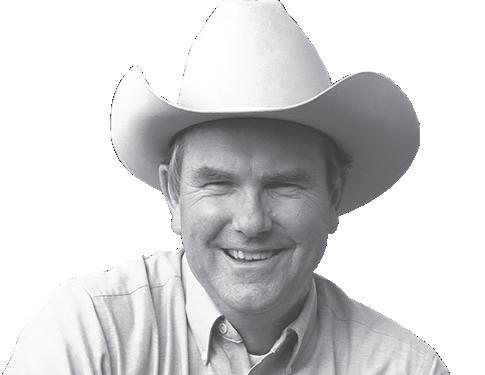
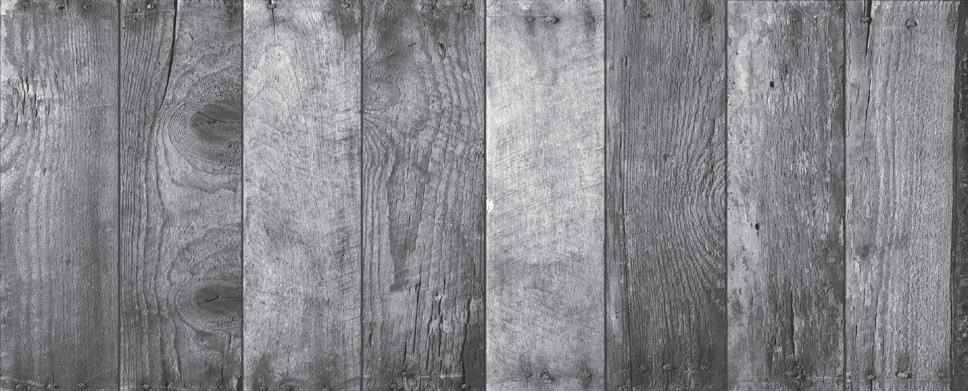
by Lee Pitts
Home Court Advantage
Most purebred bull and female sales are held on the ranch because breeders want customers to meet the family, see the cowherd and partake in a beef barbecue or pre-sale party. Many big outfits have invested heavily in auction facilities, while others just clean out a hay barn or tractor shed. A growing number of sales are held at a local restaurant where animals are sold via video, while breeders on a tighter budget with fewer bulls sell them at an auction market.
Selling at the local sale barn is a great way to sell because they already have the facilities, the sound system, the restaurant and the clerking. One downside is some people get their feelings hurt.
Take the sale barn auctioneer, for example. He can be a world champion auctioneer, know all the buyers and may even own the auction market, and still the breeder will bring in a professional purebred auctioneer who wears a sports coat, tie, $800 hat, ostrich boots, a diamond stick pin and looks as out of place as ice cream on a cow pie.
During the sale, the guy who sells every week on the stool now filled by the foreigner will continually turn down the sound system because the purebred auctioneer always turns it up too high, even when buyers are stuffing their ears with cotton. The regular guy will do everything in his power to mess up the imported prima donna from out of state.
Then there are the ring men. I’m qualified to speak on this subject because for 40 years I traveled the country as a ring man who worked purebred sales if the customer spent enough money on advertising to justify my presence. Whenever I worked an auction market sale, even if I knew the regular crew and preferred their company to the ring men I traveled with, I got the feeling my presence was as welcome as a crying baby at a wedding or funeral.
I especially remember an auction at a sale barn I regularly frequented to buy and sell cattle. John (not his real name) is the best ring man I’ve ever seen. He opened and shut the hydraulic doors and rapidly moved the cattle in and out, all while catching bids from inside the sale ring.
John stood behind the bull board right in front of the auctioneer who sat at an elevated position. On the very first animal to sell, John was catching bids going unnoticed by dressed up guys outside the sale ring. The auctioneer stopped his chant to say to John, “You don’t have to do that son, we have professionals here to do that today!”
I saw steam coming out of John’s ears as he dipped the end of his whip in fresh cow manure, popped his popper and “professionally” splattered cow manure all over the sports jacket and tie of Mr. Fancy Pants auctioneer who may have also swallowed a speck or two.
Chalk one point up for the home team. The war was on and I knew it wasn’t going to end well.
When the auctioneer sold a bull to a local rancher, John would let the ring man climb all the way up the stairs to fetch the buyer’s name and right before he’d announce it, John would smirk and say, “Oh, that’s Mr. Jenkins,” or, “That’s the Draggin’ S Ranch.”
As previously mentioned, John also controlled the in and out gates which he started to open and close faster and faster until Mr. Fancy Pants could barely keep up. He looked as winded as a fat guy trying to run a marathon.
John waited for his final “coup de grâce” until the very last bull. As I previously mentioned, back when this happened, John still utilized a whip instead of a plastic paddle and John was so good with the whip, he could hit a fly in midair.
So, when he shaved one-sixteenth of an inch off the end of the auctioneer’s nose on the last bull, he said it was an accident and apologized profusely, but I think the only thing he was sorry about was his whip didn’t cut as deep as the auctioneer calling him “son” in front of the home crowd and implying he wasn’t a professional.
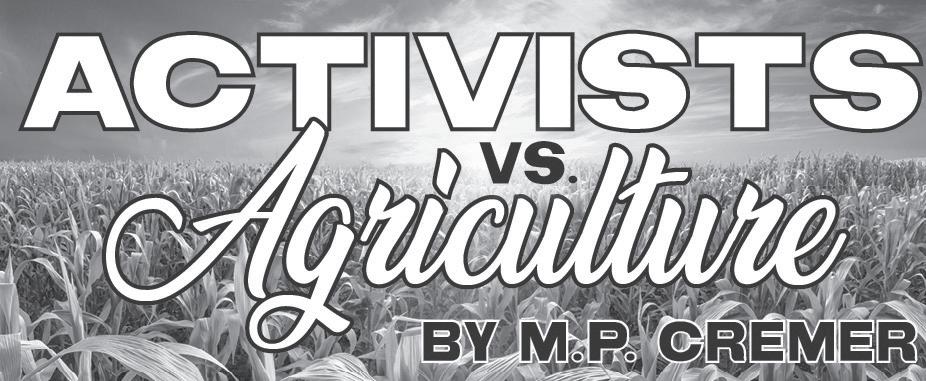
How Drought Affects You
The “d” word may refer to many different taboo words across school yards in the U.S., but in ranching and farming, the “d” word makes agriculturists shudder more than any curse word could – “drought.”
Last year, we experienced a lengthy drought in Big Timber, Mont. and this year, my family back home in Rosalie, Texas, is experiencing a drought.
Agriculturists experiencing drought is not uncommon, it happens from time to time in different spots around the globe. It’s talked about frequently and recorded for the history books.
However, what’s not often discussed is how drought affects more than just those who rely on agriculture to pay their bills. The agriculturists reading this right now probably know everything I’m about to share, but I encourage them to share it with the people in their life who may not be educated on this issue.
In simple terms, a drought is when there’s an extended period of water shortages and land dries up. You’ve probably heard of drought in your grade school science classes or scoffed at it when you saw there was a burn ban in place in your hometown, but drought impacts way more than missing out on a bonfire or two.
Drought affects every single sector of the ag industry, which in turn affects the number of crops and livestock produced and sold. This affects prices and stock at every level of the food supply chain; which leads to consumers seeing a major fluctuation and price change on some of their favorite food items at the grocery store.
For example, I saw lengthy Fakebook posts showing a long line of trucks and trailers outside a livestock market in Texas. The trailers were full of cattle, waiting to be sold because ranchers don’t have the water to produce enough grass to graze or can’t get their hands on enough grain to feed their cows. No water equals no grain to harvest; minimal grain equals a price increase.
Cattlemen selling their cows will get more money, so it must be a good thing. Right? WRONG.
If cattlemen sell more of their herd than they usually do each year to accommodate for feed shortages, they’ll have less cattle to sell next year and the year after. Furthermore, they’ll have less cows producing heifers and steers which would be sold in the next few years. By selling off 50 or so extra cows in 2022, they’ll see the long-term effects of this income loss in the years to come.
Most of the cattle sold at the sale barn will likely go to feedlots which will also have issues finding enough grain to feed said cows. With minimal grain to feed the influx of cattle, this will mean the cattle leaving these feedlots won’t be as fat as they should be.
Eventually, feedlots will sell their cattle to large packing houses who will then sell to retailers and restaurants for a higher-than-normal price. By the time a pound of burger gets to the consumer, the price they would usually pay for ground beef is a thing of the past.
This is just one example. It’s the same way across the entire agriculture industry right now. From lima beans to lamb chops, the ag industry is hurting and ultimately, this will hurt you.
The solution? Rain, and that’s something only the Big Man upstairs can fix.

